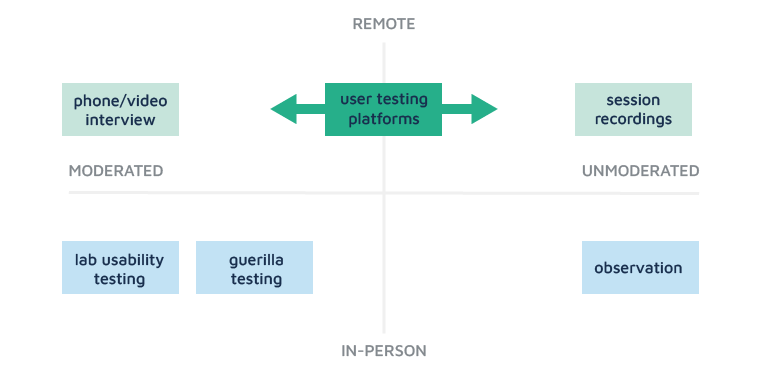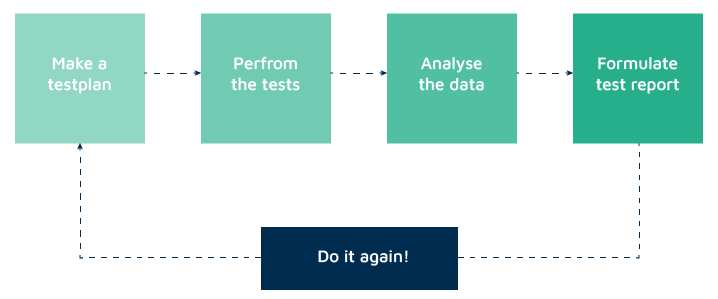You may have wondered, "How do you ensure that the user experience on your website is as optimal as possible?" Well, usability testing offers an answer to this. In this blog post, I'll briefly explain how to improve the usability of your website to achieve a better user experience.
The first impression of your website counts
You only have 5 seconds to leave a good impression through your website, make it count! Your website is the first touchpoint between your company and your customer, it should have a maximum impact. Often visitors already have a certain expectation of what they hope to find on your page. To meet these expectations, there are several techniques that can help.
One of these techniques was already explained in the blogpost of our colleague Amandine on user experience. Another one is to improve the usability of your website. The earlier you measure the usability of your website, the sooner any errors will be uncovered. In this way you can easily avoid major costs.
You only have 5 seconds to leave a good impression through your website, make it count! Your website is the first touchpoint between your company and your customer, it should have a maximum impact.
What is usability testing?
Usability is becoming increasingly important as organizations compete in ever-changing online markets. It's an umbrella term for the productivity, or ease of use, usefulness, and functionality of your website. The better your website scores on these three factors, the better the user experience. So what does this mean exactly? It's simpel: meeting your users' expectations and making their search as easy as possible.
Now, what are possible usability issues that lead to a poor user experience?
- bug problems or errors,
- a too complex structure and information architecture,
- too much ballast for a visitor to complete a task,
- Text that looks clickable but doesn’t contain a hyperlink,
- no logical setup when filling out a form, setting up your navigation, for example....
If your website does not meet your customer's expectations, they will look for another site that does address their needs. This is why a usable website is so important. There are five factors that show usability is critical to the success of your business:
- A usable website focuses on a user-centered approach, hugely important nowadays.
- The more usable your website, the more attractive it is for visitors to stay on your website and thus the lower your bounce rate.
- Your user achieves his goal efficiently and is satisfied with the search process. He does not feel that he has "lost time”.
- A usable website has a (in)direct positive effect on your visitor's purchase intent.
- 'Simplicity' is the golden rule of achieving a usable website. Convenience and saving time are two critical factors that contribute to optimal usability.
So the factors above have an impact on your ROI. The better the user experience, the more loyal your visitors. It is therefore in your best interest to meet these expectations and optimize your user experience. But how do you do this exactly?
'Simplicity' is the golden rule of achieving a usable website. Convenience and saving time are two critical factors that contribute to optimal usability.
How does Dropsolid improve the usability of your website?
We do this by using usability testing. Through these tests we evaluate both the functionality and design of your website or web application via targeted actions and observation of your users. The big advantage is that we actively involve end users in this research. This way we gather insights about what people really do on your website and not just based on assumptions.
- Determining the target group: we map out your end user
All users are important, but you can never survey them all. It’s therefore best to define your target group in order to carry out this research, depending on your budget, your objectives, the time and the necessary resources. - Choice of usability test: (Un)moderated, remote or personal.
Within these tests there are many different types which again depend on your research goal, budget and time. - Scenario plan: we briefly outline the situation of the tasks to be performed.
It's used to guide the user through the tasks during the survey.
Let's take Touring as an example: you are looking for new car insurance to go on a trip to France. You come across the Touring website and want to find out where you can get insurance. What should you do?

Let’s rock and roll: starting with usability testing!
Your target group is defined: check! You know which usability test you want to use: check! The executive tasks are set: check! Then you're set for the actual research!
During the study, the idea is for the participant to think out loud about the steps he is taking to successfully complete the tasks. This is also called the Think-Aloud method, in which only the end user talks so that the conversation is not influenced by external factors. This step provides extremely valuable information.
Based on this, we seek answers to three crucial questions:
- Do users understand how the site works or do they get 'lost', i.e. is the website structured in a logical way?
- Can users complete the key actions they want to perform?
- Do users encounter accessibility issues or bugs?
What are the next steps?
You have now gained very valuable insights, but how do you quantify them? There are three main factors to measure the usability of your website.
- Effectiveness: Were users able to perform the predefined tasks or find the right information on your website?
- Efficiency: How long did users take to complete a given task or how many intermediate steps did they take before completing the task?
- Satisfaction: How satisfied are users with the tested website?
The higher the satisfaction and efficiency of your website, the higher the experience for your user. Identifying user satisfaction is the most important measure of usability today.
Usability problems solved? Let’s go again!
A common mistake is to run usability tests only once. It's an iterative process where you have to re-examine each insight from the previous test with a different group of users.

Wondering if your customers can easily find their way around your website? We'd love to help you out!